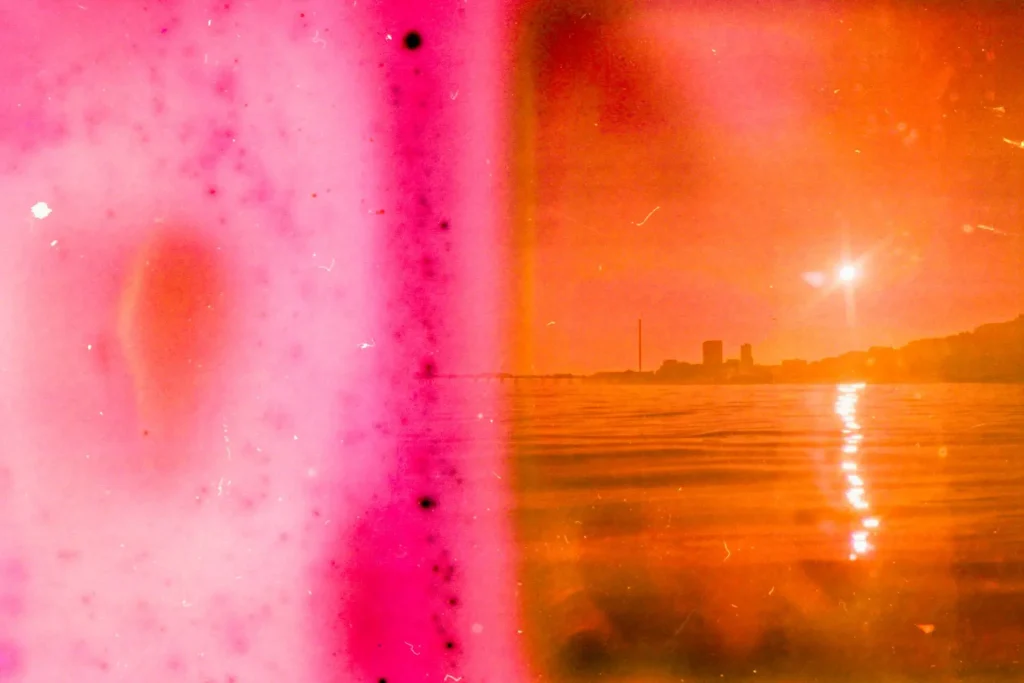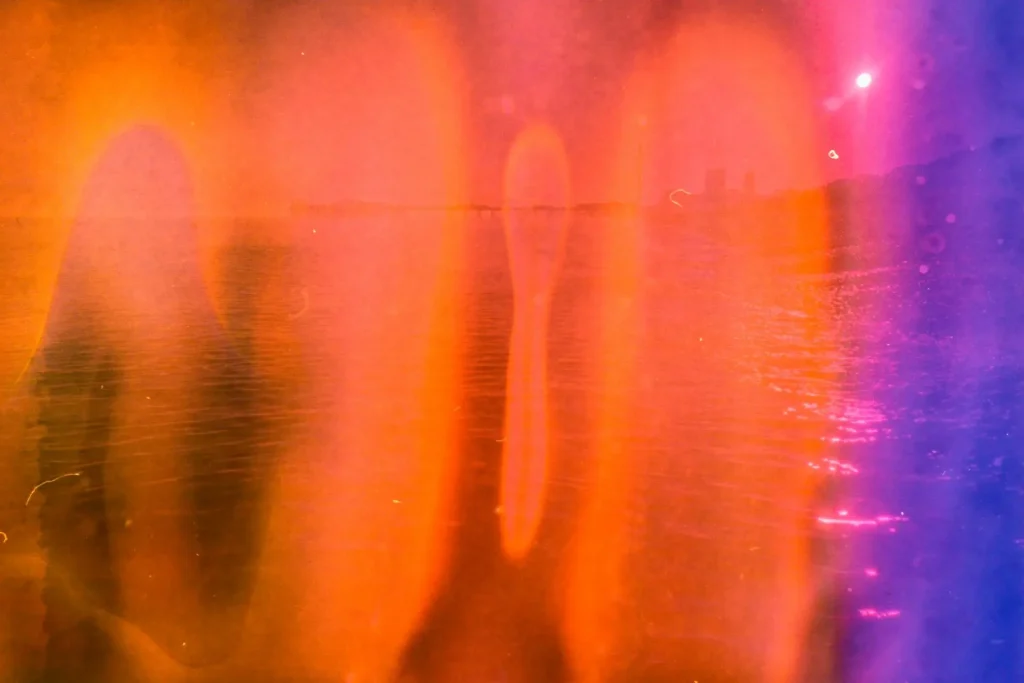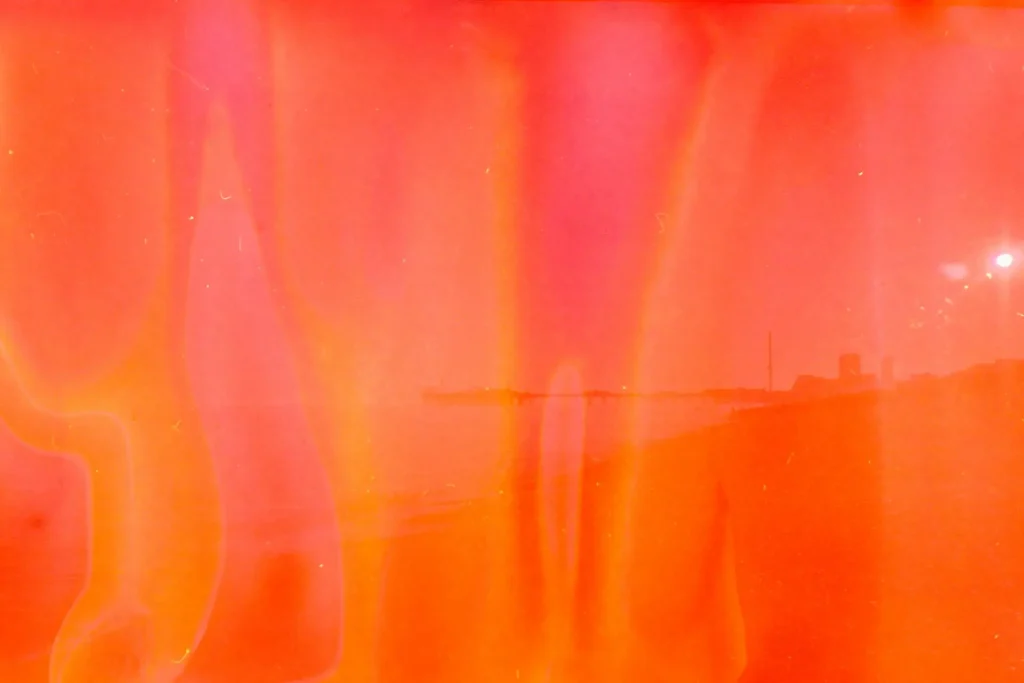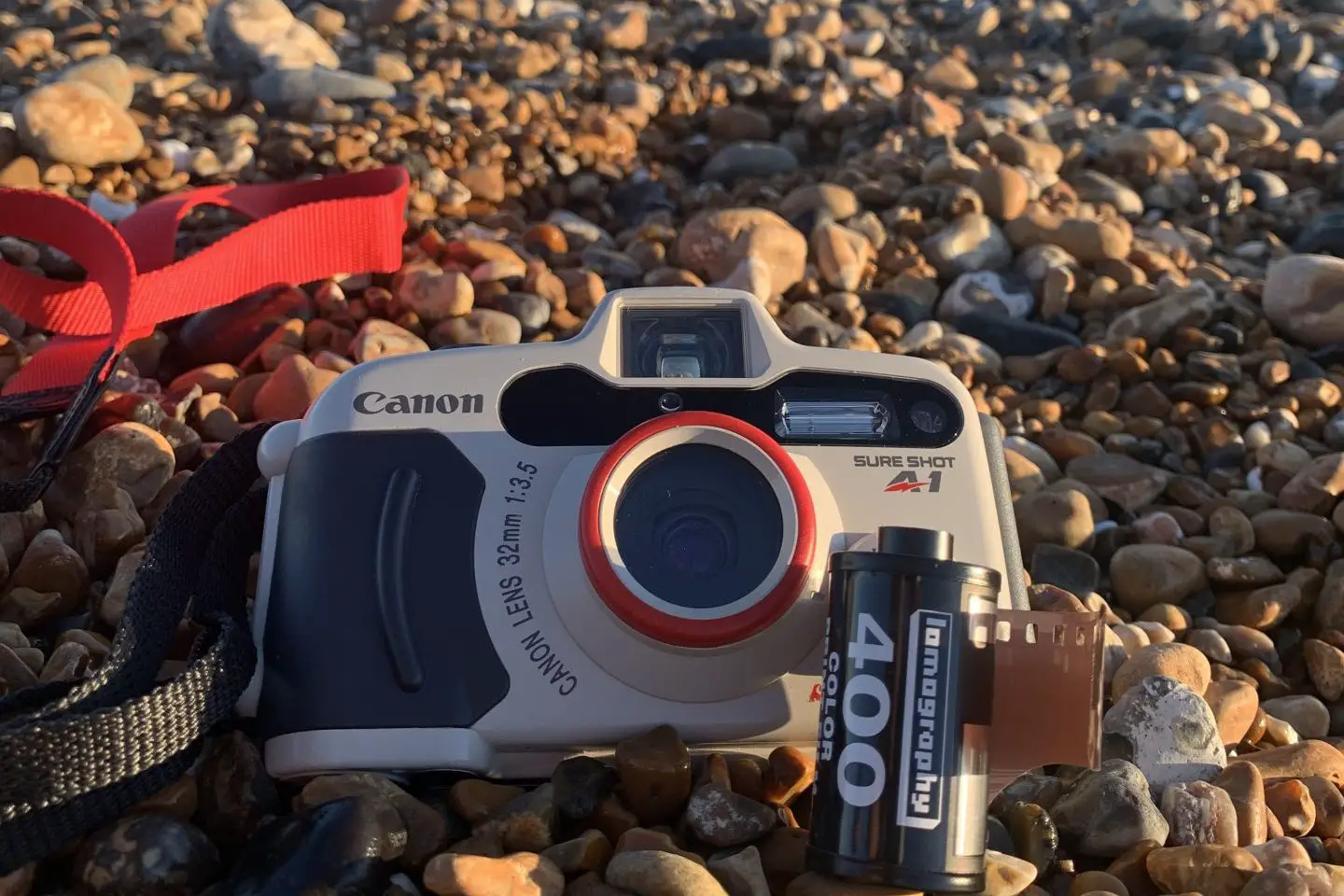I bought my first Canon Sureshot A1 back in 2010, to take away with me on a holiday to the Greek Islands. Since then it travelled the world with me, on trips to Cornwall, Iceland, India, Canada and Hawaii. Most of the time though it was used in the sea at Brighton, where I call home (although it takes great photos out of the water too). After ten years use though, sadly the shutter failed. It hadn’t had a bad innings and had served me well, so I scoured eBay for a replacement.
Eventually a few months ago I found one in seemingly prime condition. The shutter was working just fine and a test film in shallow water didn’t highlight any issues. Now the weather is finally warming up it was time to take it for a sea swim. It was a perfect midsummer evening – the sea was flat and the sun was low in the sky – so I loaded it with some Lomography CN400 film and went for a dip. After about ten shots it stopped – probably just the battery, I thought. After all, who knows when the last time it was changed? The middle of the English Channel isn’t the best place for troubleshooting though, so I carried on with my swim and resolved to take a look once I was home.
Later that night it was bad news. The seal wasn’t as good as I’d hoped it was and had let in some water – into the film compartment and the electrics – and things were terminal. I pulled the film out from the camera under a duvet and hoped that there were some salvageable shots. The next day I dropped it off at my local lab and kept my fingers crossed.
When I went to collect the negatives, the bag had been marked “Soup – uncut” and I was mortified. I was semi-aware of people putting films in various formulations before processing, but with all the stress of a dead camera it hadn’t crossed my mind that what I’d dropped off would fall into that category – of course salt water would do something though. Labs normally save these rolls like this for the last use of their chemicals so that other people’s film isn’t affected and I really hope they managed to pick my film out in time.
Looking at the negatives, things were a bit of a mess. The salt water had made quite an impact. I guessed roughly where the frames were, cut the first strip and loaded it into the scanner. I couldn’t make out anything on the first couple of shots. I scanned them in regardless and carried on. On the next shots I could start making out landmarks though – the sun in the sky, the pier, the shoreline – albeit behind an orange, pink and purple lava lamp wash. While they weren’t what I was intending, there were at least five “keepers” in there, which I’m more than happy with all things considered. The camera may be gone, but it left me with some magical parting gifts.



Will I be replacing the Canon Sureshot A1? Probably not. They’re all almost thirty years old now, so the odds of finding one with a decent seal aren’t that great. What I’ll most likely do is invest in a waterproof bag and use one of my other cameras instead (there are at least three other compacts from Canon’s Sureshot range in the box). But will I be trying film Soup again? Absolutely. And next time I’ll let the lab know up front!
Share this post:









Comments
Terry B on Accidental Film Soup with a Canon Sureshot A1 – By Rob Orchard
Comment posted: 18/07/2021